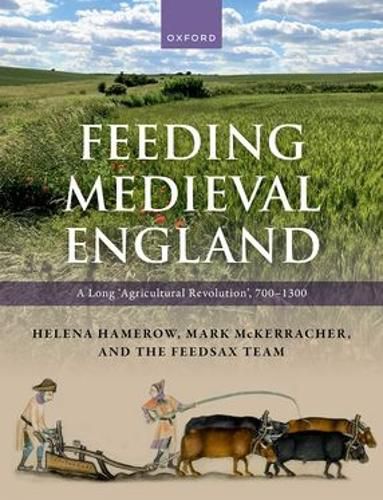Readings Newsletter
Become a Readings Member to make your shopping experience even easier.
Sign in or sign up for free!
You’re not far away from qualifying for FREE standard shipping within Australia
You’ve qualified for FREE standard shipping within Australia
The cart is loading…






This is an open access title available under the terms of a CC BY-NC-ND 4.0 International license. It is free to read at on Oxford Academic and offered as a free PDF download from OUP and selected open access locations.The population of England grew steeply in the Middle Ages, especially between the tenth and thirteenth centuries. This volume investigates how medieval farmers managed to produce the large harvests needed to sustain this growth, growth that in turn fuelled a major expansion of towns and markets. New evidence is presented for the development of the medieval farming regimes that shaped the English landscape in ways still visible today. Medieval farming is a contentious topic, not least because of the different approaches taken by historians, archaeologists and geographers and no consensus has been reached about the cultivation regimes that underpinned medieval cereal production. This volume presents a new perspective on this question, based on the results of a project that analysed the remains of medieval crops, arable weeds, livestock and pollen from hundreds of excavations. The new evidence that this generated reveals the conditions in which medieval crops were grown and how land use changed between the late Roman period and the Black Death. The authors relate the results to archaeological and written evidence for farms and farming, bringing an ecological perspective to the debate about the so-called medieval 'agricultural revolution'. The 'cerealisation' of England emerges as a regionally varied process lasting several centuries, whose overall impact was nevertheless revolutionary.
$9.00 standard shipping within Australia
FREE standard shipping within Australia for orders over $100.00
Express & International shipping calculated at checkout
Stock availability can be subject to change without notice. We recommend calling the shop or contacting our online team to check availability of low stock items. Please see our Shopping Online page for more details.
This is an open access title available under the terms of a CC BY-NC-ND 4.0 International license. It is free to read at on Oxford Academic and offered as a free PDF download from OUP and selected open access locations.The population of England grew steeply in the Middle Ages, especially between the tenth and thirteenth centuries. This volume investigates how medieval farmers managed to produce the large harvests needed to sustain this growth, growth that in turn fuelled a major expansion of towns and markets. New evidence is presented for the development of the medieval farming regimes that shaped the English landscape in ways still visible today. Medieval farming is a contentious topic, not least because of the different approaches taken by historians, archaeologists and geographers and no consensus has been reached about the cultivation regimes that underpinned medieval cereal production. This volume presents a new perspective on this question, based on the results of a project that analysed the remains of medieval crops, arable weeds, livestock and pollen from hundreds of excavations. The new evidence that this generated reveals the conditions in which medieval crops were grown and how land use changed between the late Roman period and the Black Death. The authors relate the results to archaeological and written evidence for farms and farming, bringing an ecological perspective to the debate about the so-called medieval 'agricultural revolution'. The 'cerealisation' of England emerges as a regionally varied process lasting several centuries, whose overall impact was nevertheless revolutionary.